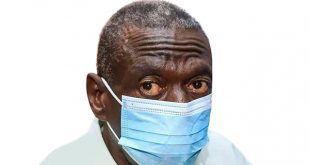
By Andrew M. Mwenda
Why the opposition needs to transcend their biases about Museveni if they are to ever have a chance to defeat him
In early 2010, my friend Prof. Jeremy Weinstein from Stanford University (then working at the White House) sent me results of an opinion poll on citizen attitudes to government he had commissioned in 126 constituencies in Uganda in 2009. I was intrigued to find that President Yoweri Museveni’s job approval rating was very high – 76 percent. Given my deeply held conviction that NRM’s performance especially in the delivery of public goods and services has been poor, my initial suspicion was that there was something wrong with the poll.
This is a normal human sentiment. Most of us when confronted with information that disproves our convictions, we look for arguments to discredit it. The opposite is called “confirmation bias” – the tendency to buy into information that confirms our pre-existing bias. Although I hold strong convictions, I am also a disciple of Socrates, the greatest philosopher in history. Socrates said that philosophy begins when one learns to doubt, especially to doubt one’s strongly held beliefs, dogmas and axioms.
So I became keen to look at other opinion surveys especially the 2010 and 2011 by Afrobarometer. I noticed that mainstream views in Kampala’s talking shops about public goods and services are at variance with those of the ordinary citizens. For example, while the majority of responds said that the quality of public goods and services in their area was “very poor” or “fairly poor”, (58 percent for roads and 51 percent of health), they also assessed the situation as “getting better/much better” (75 percent for roads, 77 percent for health). Responses were even more positive about UPE which I think is atrocious – with 65 percent saying it is “very good” and “fairly good.”
I became eclectic – while arguing that the majority of Ugandans say services are improving, I felt that people had voted Museveni in spite of (and also because of) very bad services. A reader replied on our website with a long explanation saying he had worked in the rural areas of all the four regions of the country. He then argued that from the vantage point of many ordinary citizens he had interacted with, Museveni and NRM have been successful first in improving rural incomes and therefore tastes but also in improving the quality of public goods and services.
I began reflecting about my village of Kanyandahi. When I was a young man in the late 1980s, people in Kanyandahi used to drink the local brew, tonto, as their alcoholic beverage. Bottled beer was a luxury that even the “rich” could hardly afford – that is if it was available. Today, tonto is rapidly disappearing from bars as many villagers have taken to Senator and Eagles lagers. This change in consumption is a reflection of increased incomes, which has led to improved taste in consumer preferences in rural areas. This contradicts the narrative of growing poverty and deprivation in rural areas.
At a national level, this is reflected in the growth of beer companies. While in 1987 the combined output of beer by NBL and UBL was 7.8 million litres per year, by 2000 this output had grown to 80.8m litres per year. Today, the combined consumption of beer produced by NBL and UBL is 360 million litres per year. This means that in 1987, Ugandans were drinking 43,000 bottles of beer per day. In 2000, this number had grown to 450,000 bottles and today they are drinking two million bottles per day.
These statistics cut across every area of consumption, itself the best indicator of growing incomes especially among the poor – cooking oil, soap, kerosene, sugar, soft drinks, airtime, iron sheets etc. Mukwano cooking oil, largely consumed by the poorer segments of our society, has increased its revenues from Shs 67 billion in 2000 to Shs 500 billion in 2012. It now also has a competitor, Bidco, whose revenues from edible oil is Shs 500 billion. Ugandans cannot be consuming these increasingly large volumes of industrial products when they are growing poorer.
On public goods and services, the 21km road from Kanyandahi to Fort Portal was impassable. So we would walk the entire distance or ride on a bicycle. On a lucky day one could hike a lift from an occasional lorry or tractor that had dared go to the village. Farmers in Kanyandahi were finding difficulty getting their produce to the market in Fort Portal, leave alone Kampala. Youths would make bicycles out of wood and use them to laboriously ferry bananas and other produce to Fort Portal town.
Today, there are several omnibuses plying the route competing for passengers. Pick-up trucks and lorries no longer carry passengers but cargo. The road is not so good these days but it is a much better version of the ragged one that had stifled trade in the 1980s. Farmers need not carry their produce to the market. Lorries crisscross the villages daily looking for maize, bananas, beans, ground nuts, Irish and sweet potatoes to take to Fort Portal and Kampala. Sometimes some farmers are paid before they harvest their produce i.e. now they trade in the “futures market”. To add salt and spice to this developmental soup, the youths who used to ride wooden bicycles are now riding boda bodas. The transition to motorcycles is of transformational value.
 The Independent Uganda: You get the Truth we Pay the Price
The Independent Uganda: You get the Truth we Pay the Price


